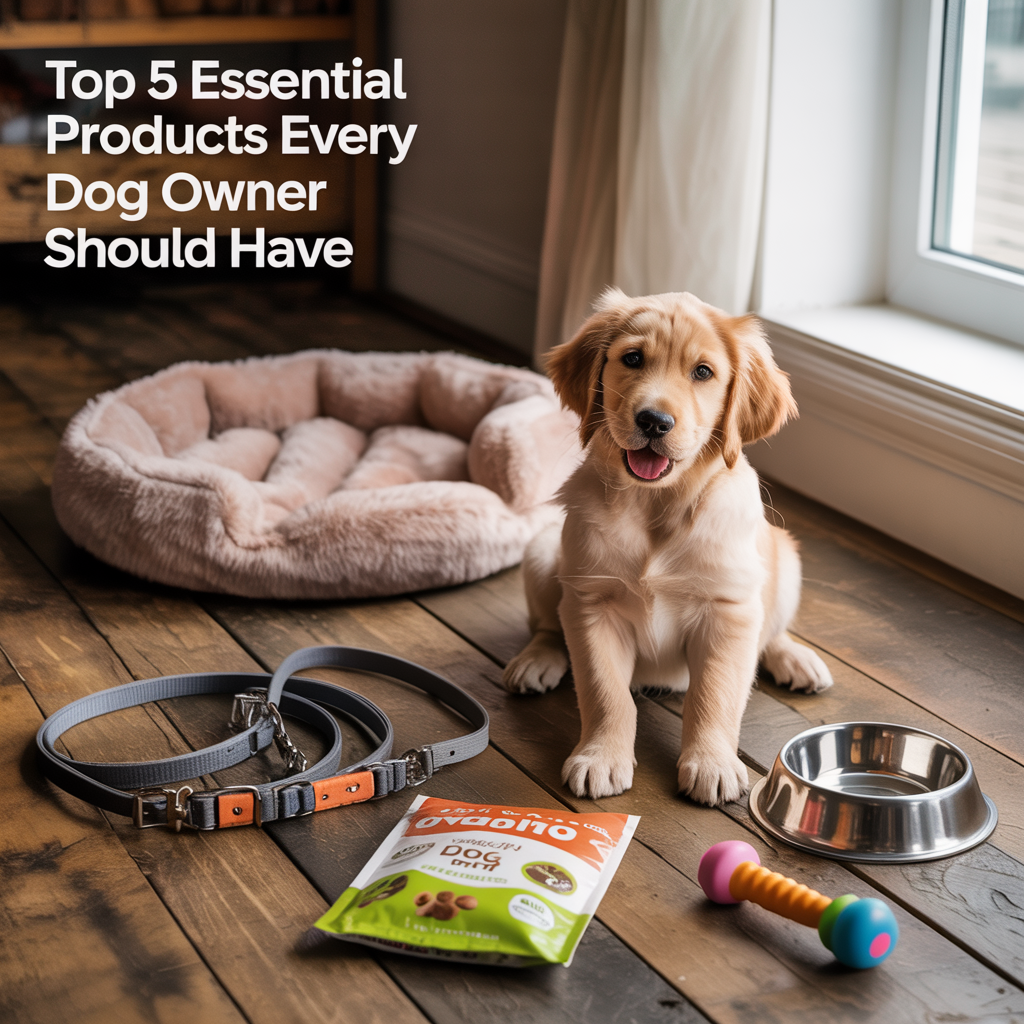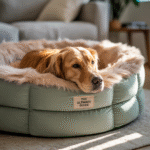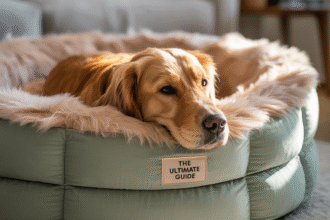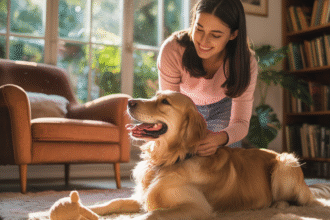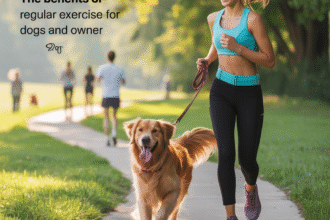Bringing a dog into your life is one of the most rewarding decisions you can make. These loyal companions fill our days with joy, laughter, and unconditional love. But along with the wagging tails and wet-nose kisses comes the responsibility of ensuring your furry friend has everything they need to thrive. Whether you’re a first-time dog parent or looking to upgrade your pet care arsenal, having the right products can make all the difference in your dog’s health, happiness, and overall quality of life.
After years of collective wisdom from veterinarians, professional trainers, and countless dog owners, certain products have proven indispensable. These aren’t just nice-to-haves or trendy accessories—they’re the foundation of responsible dog ownership, addressing your pet’s most fundamental needs while making your life easier in the process.
1. A High-Quality, Properly Fitted Collar and Leash
The collar and leash combination is perhaps the most fundamental tool in any dog owner’s toolkit. It serves multiple critical functions beyond simple restraint. A well-chosen collar acts as your dog’s identification badge, safety device, and primary means of communication during walks and training sessions.
When selecting a collar, material and construction quality matter immensely. Look for collars made from durable materials like genuine leather or high-grade nylon that can withstand daily wear, weather exposure, and the occasional enthusiastic pulling. The collar should be adjustable and fit snugly enough that it won’t slip over your dog’s head, but loose enough to fit two fingers comfortably between the collar and your dog’s neck. For dogs with sensitive skin or those prone to irritation, padded collars with neoprene or fleece lining can prevent chafing and discomfort during extended wear.
The leash you choose should complement your lifestyle and your dog’s temperament. A standard six-foot leash offers the perfect balance of control and freedom for most situations, allowing your dog to explore while keeping them close enough for safety. Retractable leashes might seem convenient. Still, they often encourage pulling behaviors and can be dangerous in high-traffic areas where quick control is essential. For training purposes or walks in busy urban environments, a shorter four-foot leash provides better control and clearer communication with your dog.
Don’t forget the importance of identification tags attached to the collar. Even if your dog is microchipped, a visible tag with your current contact information provides the quickest way for someone to reach you if your dog ever gets lost. Consider including your pet’s name, phone number, and any critical medical information.
2. Appropriate Food and Water Bowls
While they might seem like simple accessories, the bowls you choose for your dog’s meals and water can significantly impact their eating habits, digestion, and overall health. The right feeding setup goes beyond aesthetics – promoting healthy eating behaviors and preventing potential health issues.
Stainless steel bowls remain the gold standard for most dogs. They’re virtually indestructible, dishwasher-safe, and don’t harbor bacteria or retain odors like plastic bowls can. They’re also heavy enough to stay in place during enthusiastic eating sessions. Ceramic bowls offer similar benefits with added aesthetic appeal, though they can chip or crack if dropped. Avoid plastic bowls whenever possible, as they can cause chin acne in some dogs and may contain harmful chemicals that leach into food and water over time.
Slow-feeder bowls with built-in obstacles can be game-changers for dogs who gulp their food too quickly. These specially designed bowls force dogs to work around ridges, mazes, or raised sections to access food, naturally slowing their eating pace. This not only prevents choking and vomiting but also reduces the risk of bloat, a potentially life-threatening condition widespread in large, deep-chested breeds.
The height of your dog’s feeding station matters more than many owners realize. Elevated feeders can benefit older dogs with arthritis or neck problems and large breeds who would otherwise have to crane their necks uncomfortably low to eat. Bringing a dog into your life is one of the most rewarding decisions you can make. These loyal companions fill our d The ideal height allows your dog to eat with their neck in a neutral, comfortable position.
Consider having multiple sets of bowls – one for meals and a separate water station that’s always accessible. Water bowls should be placed in several locations throughout your home, especially during hot weather or if you have a multi-story house. Fresh water should always be available, and bowls should be washed daily to prevent bacterial growth.
3. A Comfortable, Durable Dog Bed
A quality dog bed is far more than just a soft place to sleep – it’s a crucial investment in your dog’s long-term joint health, comfort, and sense of security. Dogs sleep between 12 and 14 hours a day, and senior dogs may sleep even more. Providing proper support during all those hours of rest can prevent or alleviate joint problems, improve sleep quality, and give your dog a designated space entirely their own.
The ideal bed depends heavily on your dog’s size, age, sleeping style, and any existing health conditions. Orthopedic beds with memory foam or high-density foam cores provide exceptional support for older dogs or those with arthritis, hip dysplasia, or other joint issues. These beds distribute weight evenly, reducing pressure points and relieving aching joints. Younger, healthy dogs might prefer softer, more cushioned beds that allow them to sink in and feel enveloped.
Size matters tremendously when selecting a bed. Your dog should be able to stretch out completely when lying on their side, with room to spare. Many dogs also enjoy curling up, so bolster beds with raised edges provide security and a comfortable place to rest their head. Flat mat-style beds or rectangular cushions work best for dogs who tend to sprawl out.
Durability and washability are practical considerations that shouldn’t be overlooked. Look for beds with removable, machine-washable covers that can withstand frequent cleaning. Water-resistant or waterproof liners protect the inner cushioning from accidents, drool, and general moisture. Consider beds made with ballistic nylon or other chew-resistant materials for heavy chewers or dogs who tend to destroy their bedding. However, no bed is truly indestructible for a determined chewer.
Placement of the bed is almost as important as the bed itself. Dogs are social creatures who want to be near their family, so placing beds in common areas where the family spends time allows your dog to rest comfortably while still feeling included. Many dogs benefit from having multiple beds throughout the house – one in the bedroom for nighttime, one in the living area for daytime naps, and perhaps one in a quiet corner for when they need alone time.
4. Grooming Tools Suited to Your Dog’s Coat Type
Regular grooming is essential for every dog, regardless of breed or coat type. Beyond keeping your dog looking their best, proper grooming maintains skin health, prevents painful matting, allows you to check for lumps, bumps, or parasites, and strengthens the bond between you and your pet. The key is having the right tools for your dog’s coat type and grooming needs.
For short-haired breeds like Beagles or Boxers, a rubber curry brush or grooming glove removes loose fur and distributes natural oils throughout the coat. These dogs may not need daily brushing, but weekly sessions help minimize shedding and keep their coat shiny. A soft-bristle brush can provide the finishing touch and is gentle enough for sensitive areas.
Dogs with longer coats or double coats require more specialized tools. A slicker brush with fine wire bristles removes loose undercoats and prevents matting in breeds like Golden Retrievers or German Shepherds. An undercoat rake is invaluable during shedding season, reaching deep into the coat to remove dead fur before it ends up all over your furniture. For dogs with continuously growing coats like Poodles or Yorkshire Terriers, a combination of slicker brushes and metal combs helps prevent matting and keeps the coat manageable between professional grooming appointments.
Nail care is a crucial but often overlooked aspect of grooming. Long nails can cause discomfort, affect your dog’s gait, and even lead to skeletal issues over time. Invest in quality nail clippers sized appropriately for your dog, or consider a nail grinder for dogs anxious about traditional clippers. The grinder allows for more gradual, controlled trimming and reduces the risk of cutting the quick. Keep styptic powder on hand in case of minor bleeding.
Don’t forget about dental care in your grooming routine. While not traditionally considered a grooming tool, a dog toothbrush and enzymatic toothpaste are essential for oral health. Daily brushing is ideal, but a few times per week can significantly reduce plaque buildup and prevent periodontal disease. Start slowly, making it a positive experience with plenty of praise and rewards.
5. Interactive Toys and Mental Stimulation Tools
Mental stimulation is as crucial as physical exercise for your dog’s well-being. Interactive toys and puzzle feeders engage your dog’s natural problem-solving abilities, prevent boredom-related destructive behaviors, and provide enrichment that keeps their minds sharp throughout their lives. A mentally stimulated dog is generally calmer, happier, and less likely to develop behavioral issues.
Puzzle feeders and treat-dispensing toys serve double duty by slowing mealtime while providing mental challenges. These range from simple Kong toys that can be stuffed with treats or peanut butter to complex puzzle boards with sliding compartments and hidden treats. Start with easier puzzles and gradually increase difficulty as your dog masters each level. This type of feeding enrichment taps into your dog’s natural foraging instincts and can turn a five-minute meal into a 20-minute engaging activity.
Chew toys are essential for dental health and emotional satisfaction—chewing releases endorphins that help dogs relax and cope with stress. Choose chew toys appropriate for your dog’s size and chewing intensity. Rubber toys like Kongs or Nylabones work well for most dogs, while aggressive chewers might need specially designed ultra-durable options. Always supervise your dog with new chew toys and remove any that become small enough to swallow or develop sharp edges.
Interactive play toys that encourage physical activity and mental engagement are invaluable for high-energy breeds. Flirt poles, tug toys, and fetch toys that bounce unpredictably keep dogs engaged and thinking while they play. Rotate toys regularly to maintain novelty—having fewer toys available at once but switching them out weekly keeps things interesting for your dog.
For dogs who spend time alone, consider toys that provide comfort and companionship. Snuggle toys that can be warmed in the microwave provide comfort for anxious dogs, while toys with heartbeat simulators can help puppies transition to their new homes. Some modern interactive toys even connect to smartphone apps, allowing you to play with your dog remotely or dispense treats while you’re away.
Making Smart Choices for Your Canine Companion
These five essential product categories form the foundation of responsible dog ownership, addressing your pet’s basic needs for safety, nutrition, comfort, hygiene, and enrichment. While every dog is unique and may have additional specific needs based on their breed, age, or health status, starting with these fundamentals ensures you’re well-equipped to provide excellent care.
Remember that the most expensive option isn’t always the best choice for your dog. When making selections, consider your pet’s individual needs, your lifestyle, and your budget. Quality products that are well-suited to your dog will last longer and provide better value than cheaper alternatives that need frequent replacement.
Building your collection of dog essentials doesn’t have to happen all at once. Start with the absolute necessities – collar, leash, food bowls – and gradually add and upgrade items as you learn more about your dog’s preferences and needs. Pay attention to what works and what doesn’t, and don’t be afraid to try different products until you find the perfect fit.
Most importantly, remember that while having the right products makes dog ownership easier and more enjoyable, they’re just tools to help you provide what your dog needs most: your time, attention, and love. The best toy in the world can’t replace a game of fetch with their favorite human, and the most comfortable bed isn’t as appealing without the security of knowing their family is near. Use these essential products as a foundation for building a lifetime of happy, healthy memories with your four-legged best friend.
